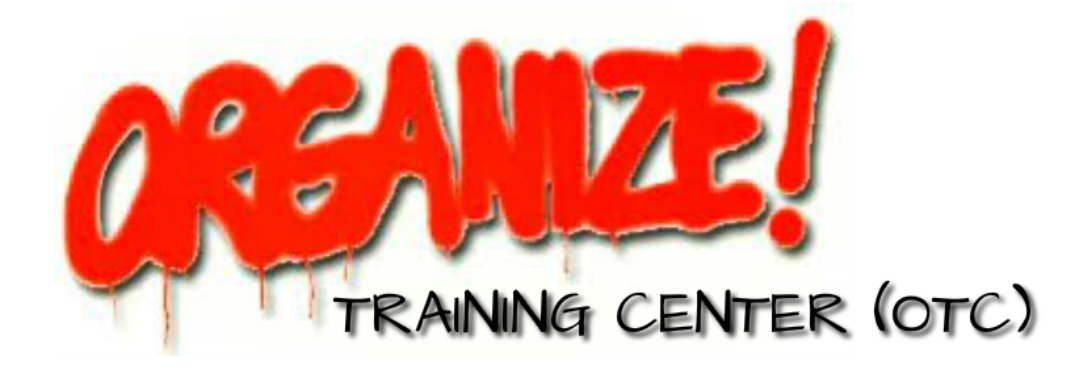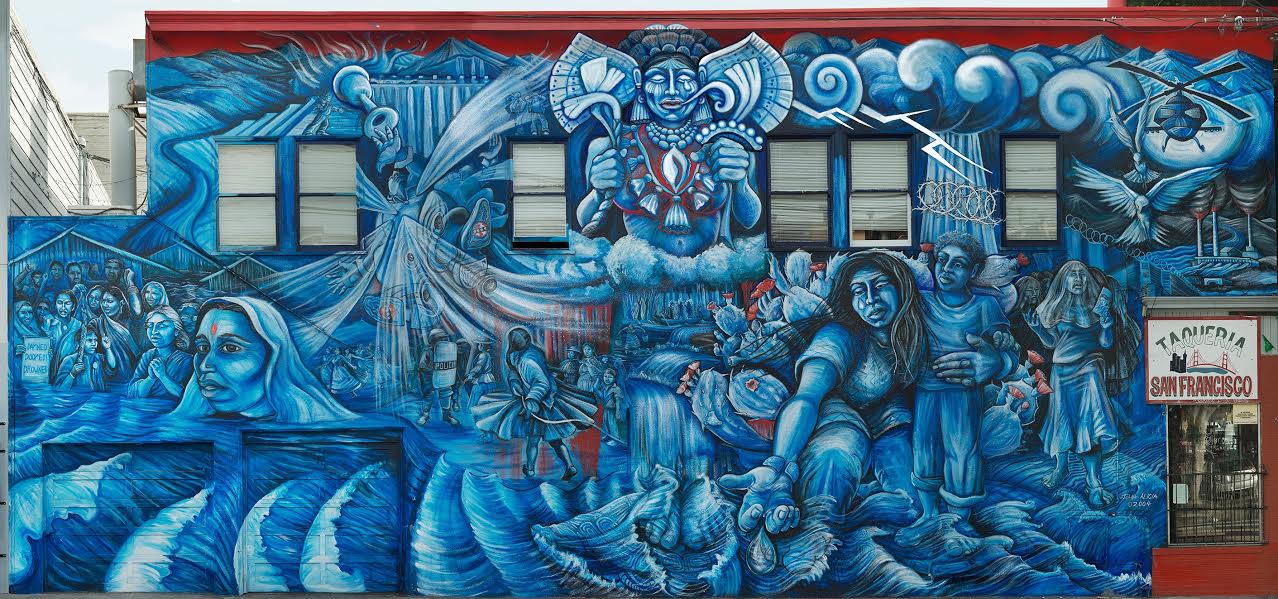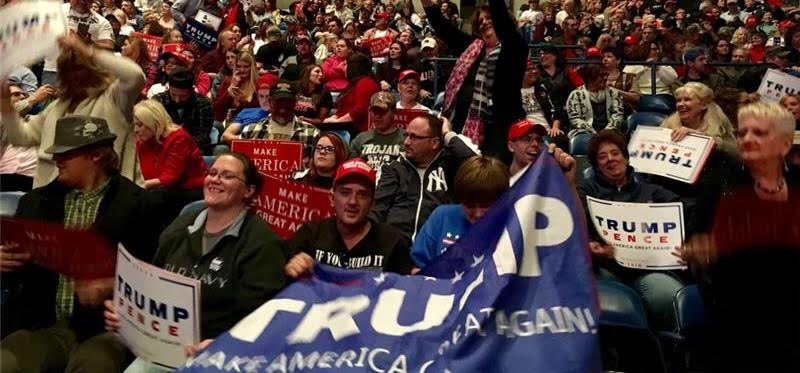|
Preface
Dr. Carol Anderson is a professor of African American history at Emory University. She was recently awarded the National Critics Circle Award for her book White Rage: The Unspoken Truth of Our Racial Divide. This is a brief commentary on Pamela Newkirk’s review* of Anderson’s White Rage, and on her 2014 Washington Post op ed article, “Ferguson isn’t about black rage against cops. It’s white rage against progress,”** which was the forerunner of her book. I haven’t yet read Carol Anderson’s book, only the review of it and her article that led to the book. All her facts about what happened to African-Americans in the United States seem right to me. But I also think there is a serious problem with her interpretative framework. The latter is what I address here. Undifferentiated White People “Rage,” “resentment”, “fear” and even “anger” seem to me unusual words to describe the conscious and deliberate efforts by powerful “white” people, and their coopted allies of a variety of other colors, to keep what they have: power, status, wealth and income. As Anderson puts it in her Washington Post column that led to White Rage, “the real rage smolders in meetings where officials redraw precincts to dilute African American voting strength or seek to slash the government payrolls that have long served as sources of black employment,” and “…white rage doesn’t have to take to the streets…to be heard.” She could have added bankers who draw red lines that determine who gets what loans at what interest rate (or doesn’t get them at all). Or school administrators who fail to adopt policies and practices that don't track bottom quartile kids into dead-end jobs or prison. Her words are more accurate when applied to her post-Brown v. Board description: “But black children, hungry for quality education, ran headlong into more white rage. Bricks and mobs at school doors were only the most obvious signs.” Isn’t there an important difference between the angry demonstrators who sought to block black student entry to Little Rock’s Central High School and the white plantation owners who sought to reclaim their power after the Civil War, the white politicians who want to keep the power they have, or the white bankers whose decisions destroyed more than half the wealth of the country’s black and Latino communities? More on that question in a moment. Pamela Newkirk, The Washington Post reviewer, of Anderson’s book accepts the framework Anderson presents, and adds “rebellion” and “revolt” to its language: “Anderson, a professor of African American history at Emory University, traces the thread of white rebellion from anti-emancipation revolts through post-Reconstruction racial terror and the enactment of Black Codes and peonage, to the extraordinary legal and extralegal efforts by Southern officials to block African Americans from fleeing repression during the Great Migration. She continues connecting the dots to contemporary legislative and judicial actions across the country that have disproportionately criminalized blacks and suppressed their voting rights.” Elite Power The old Confederacy’s institutional/economic back was never broken: the plantation owners retained ownership of their land. Forty acres and a mule was an unkept promise. When 1877’s great compromise took place, the political revolution that might have taken place was betrayed. The power of the oligarchy re-asserted itself. The destruction of the nascent alliance of freed slaves, African-Americans who were Freedmen, and white yeomen farmers who choose to become Republicans is detailed in the book, The Union League Movement in the Deep South, by Michael W. Fitzgerald. Read it and weep. But please read it. In more recent times, Democrats haven’t been any better when it comes to the scandal of what the banking industry did to minority community wealth. And Obama was part of it. Indeed, in Chicago he was part of the community development corporation-banks-builders-local politicians complex that undermined independent black community organizing that had been going on there. Like most of the black clergy, he was, indeed, complicit in it. Ditto on another scandal: his appointment of Arne Duncan as Secretary of Education. Newkirk quotes Anderson, “The GOP, 'trapped between a demographically declining support base and an ideological straitjacket...reached for a tried and true weapon: disfranchisement'." Both of them should include as part of the problem those black politicians who drew 80% black-voter districts to make their re-election a certainty. Absent from Newkirk, and, I suspect, Anderson, is any critique of the Democrats whose policies, including those of Obama, contributed to the rage of white working class people and to the disengagement from the 2016 election when minorities stayed home in droves—even in states where there was no voter suppression. Divide and Conquer from Below Also absent in this framework is anything to explain why the Ohio, Pennsylvania, Wisconsin and other Rust-Belt state white ethnic Democrats voted TWICE for Obama before voting for Trump. To explain that requires adding mainstream Democrats, including Obama, but not for the reason of his being black, to the source of their rage. As long as these two groups—white elites and white working class—are treated as indistinguishable, there is little hope to divide them—which is what people who want racial and economic justice have to do.
0 Comments
(To download the full text of this blog: "A Review of Fred B. Glass, From Mission to Microchip: A History of the California Labor Movement." Oakland: University of California Press, 2016.)
In this comprehensive look at California workers—their job experiences and living conditions, antagonisms among them and with the powers that be, their leaders and the rank and file, politicians who claimed to speak for them and some who actually did, their unions and allies, and much more—Fred Glass does for this history what Taylor Branch did in his trilogy account of major portions of the civil rights movement, The King Years. From Mission to Microchip is filled with stories, analysis, history and data. It is a good and important story, well told. In Glass’s telling, the Franciscan Fathers, often portrayed by others as benign protectors of California’s Native Americans, are anything but. Shepherded into the string of California Missions along the state’s coast, Indians were exposed to diseases to which they were not immune, removed from their villages, forced to work long days at tasks foreign to them and their way of life, denied the right to practice their beliefs, and exploited in many other ways. Their numbers quickly dwindled to a shadow of their pre-colonization presence. When the Fathers were not directly the exploiters, they provided the direct abusers with the rationalization for treating “heathens” as less than human. The Gold Rush is a similar tale of woe for many. Contrary to the myths, most of those who rushed to the mountains to pan its streams and rivers for riches ended up working for others, and receiving a pittance for their labors. Glass takes us through other major moments in the state’s labor history: the struggle for the 8-hour day; the Workingmen’s Party, which briefly governed San Francisco and then rapidly declined in corruption; the growth of the Los Angeles labor movement, and its demise as a result of the bombing of The Los Angeles Times building by labor union activist James B. McNamara who confessed to the event that killed two dozen people; the 1930s farm labor organizing history; the growth of the Hollywood unions, and the anti-Communist campaign that dramatically weakened them; the San Francisco and Oakland general strikes; the growth of public employee unions; the revolt of women workers, the development of “equal pay for equal work” campaigns, and the formulation of “comparable worth” as a strategic idea for organizing women at work; the decline of industrial work and unions in the state; the dramatic SEIU “Justice for Janitors” campaign… and more. Throughout most of this history, ethnic and racial antagonism divided California’s working class and made it easy for employers to play one group against another. Among the contending groups: Chinese, Japanese, Mexicans, Irish, “Okies,” African-Americans, Filipinos. Glass emphasizes how destructive these divisions were for organizing. There are moments when racial and ethnic rivalry and hostility are overcome, largely as a result of visionary labor organizers and leaders who persuade workers that they will not win justice without solidarity. Among the examples: the International Longshoremen’s & Warehousemen’s Union (ILWU) and the United Farm Workers of America (UFW). Glass provides rich stories and analysis on how these moments of unity, sometimes stretching into years, were achieved. Like the Taylor Branch trilogy, this book has its weaknesses. No book attempting to cover such a span of history can do so without omissions, exaggerations, errors and other problems. I found some of these particularly in the areas where I have the greatest expertise and direct experience. A significant bibliography directs those wanting to delve more deeply into particular pieces of this history. Although Glass does mention the religious factor, the book exhibits a strange tone-deafness to the role religion plays and played in California (and other) labor history. For example, during World War II, it was Catholic leadership in ILWU Local 10 that led efforts to maintain earlier won and contractually agreed upon workplace rule gains. There is no mention of Fr. Andrew Boss and the Jesuit University of San Francisco’s Labor-Management School. Ditto for the Association of Catholic Trade Unionists’ ILWU member James Kearney who won ten single year terms as president of Local 10 (by constitutional rule, elected officials can hold full-time office for only two consecutive years before returning to waterfront work). The ironically named Boss challenged Harry Bridges and other leadership close to the Communist Party, and kept that leadership on its toes in the protection of workplace gains by offering a rival center of leadership training. Missing in Glass’s ILWU account is the fact that the International supported urban renewal (known as “Negro removal”) in San Francisco’s Western Addition, and that a rank-and-file Local 10 vote overcame Bridges post-World War II recommendation against accepting temporary African-American workers into “A-Book” (first class) union membership. (Bridges feared major post-war layoffs.) In the case of the United Farm Workers, the problem is greater. There is no mention of the Protestant California Migrant Ministry, and the roles played in UFW by Reverends Chris Hartmire, Jim Drake (who led the union’s boycott division), Gene Boutillier (who was, for a period, the union’s legislative lobbyist) and other of its staff members who were important full-time workers for the union. Nor is there mention of Marshall Ganz as UFW’s director of organizing and his rootedness in the Jewish social justice tradition and faith. The controversy caused within UFW by Chavez accepting an award from Philippines’ dictator Ferdinand Marcos is acknowledged, but its devastating impact on church support for UFW is not. (It also alienated Chavez from key Filipino leaders and other rank-and-file union members, as well as from many of the student volunteers.) The meaning for Chavez of “the march” from Delano to Sacramento is also misunderstood in its portrayal by Glass. It was an important factor in the passage of state collective bargaining legislation for farm workers. However, “Peregrinación” (pilgrimage) and “Penitencia” (penitence for sins) were intended for exactly what the words mean. It was secular people who called it a “march.” Frank Bardacke’s book, Trampling Out the Vintage: Cesar Chavez and the Two Souls of the United Farm Workers, is central to understanding the union. Bardacke explains why: “What many of the liberals and radicals on the staff of the union could never understand was that all the fasts, the long marches and the insistence on personal sacrifice…were not publicity gimmicks, they were essential Chavez.” Chavez emerged from the Community Service Organization (CSO), where he started as a rank-and-file member and became Executive Director. CSO, Glass tells us, “was supported by the Catholic Church….” The conservative Los Angeles Archdiocese, whose Archbishop was characterized by Saul Alinsky as a “pre-historic muttonhead,” was anything but supportive. However, local priests, religious women and lay leaders were. That distinction is central to understanding Chavez’s training. Alinsky’s central role in all this history is only tangentially mentioned by Glass. In addition to hiring Fred Ross and funding CSO, Alinsky’s training was the underpinning of the Migrant Ministry’s support for the union. And other bishops did support Chavez. Unfortunately, Bardacke’s book doesn’t help much in clarifying Alinsky’s role either. Recognizing the impossibility of gaining official church sanction for CSO, and having had an earlier negative experience with a “coalition” organization, Alinsky-staffer Fred Ross developed an “individual membership” organization, rather than Alinsky’s usual “organization of organizations.” It was the discipline of one-to-one conversations, followed by house meetings, then a large membership meeting that taught Chavez how to build the National Farm Workers Association (NFWA)—predecessor to the UFW. Glass is in good company. There are small, and some large, errors in the aforementioned King years trilogy by Taylor Branch. No single writer of broad histories like this can master all the facts. No matter. Both Glass and Branch make major contributions. And from these rich resources, those interested in particular aspects of the histories can dig more deeply into various periods, organizations, campaigns, and histories. Thank you, Fred Glass, for this important book. (For a more in depth conversation on this topic, see "Response to 'Resistance to Trump Will Separate Progressives from Neoliberals,'" by Peter Olney & Rand Wilson, Stansbury Forum, February 5, 2017.)
There is a great deal of talk these days about framing the right message to reach Trump voters, progressives finding a voice by criticizing Trump’s program, effectively communicating with white working class people, and similar formulations. The problem is deeper. There is a large, alienated white working class part of the electorate with whom “progressives” have no relationships. To rebuild those relationships is the pre-condition to turning these voters away from Trump’s politics. As Carey McWilliams, Jr once said, “politics is with whom and for what, and in precisely that order.” A friend of mine recently wrote that we need to “carry a message of popular and economic democracy to the heartland and explicitly challenge…neo-liberal orthodoxy”. Is that really the language that speaks to people with whom we need to be in a conversation? Doesn’t “carrying a message to them” make them consumers, continuing their status as objects of politics (only in this case, objects of the good guys) rather than participants in, and co-creators of, it? There’s now a frenzy of “exposing Trump hypocrisy.” He relishes a lot of it: red meat for his constituency. The problem we are now in is deeper than Trump, though he is its most alarming feature. The problem includes his successful appeal to resentment by people who feel ignored because they have been ignored; who are told one thing by candidates before elections only to experience something else after they get elected; who are the object of polling, focus groups, direct mail and door-to-door solicitation—none of which engages them directly to act in their own interests and on their own values by doing anything more than voting, clicking a computer key or occasionally being part of a “demo”. “[E]xposing and discrediting” Democrat “neoliberals,” as my friend wrote, is necessary but not sufficient. “Going forward” requires far more than “labor and the left [adopting] a convincing program to truly advance working class interests”. It begins with listening and developing relationships, an orientation that has been missing now for some time. Progressive isolation from constituencies crucial to its success has deep roots. The seeds that led to that isolation were planted in the 1960s. It will take a while to dig them up. |
AuthorMike Miller has had almost 60 years experience as a community organizer. Before founding the ORGANIZE! Training Center in San Francisco in 1972, he was a founding member of SLATE and an SNCC field secretary. In 1967, he directed one of Saul Alinksy's community organizing projects. Archives
February 2018
Categories(The quote at the top of the
page is by Desmond Tutu.) |
(415) 648.6894 [email protected] 442 Vicksburg, San Francisco, CA 94114
Copyright© Since 2016, ORGANIZE! Training Center. All rights reserved.
Copyright© Since 2016, ORGANIZE! Training Center. All rights reserved.




 RSS Feed
RSS Feed